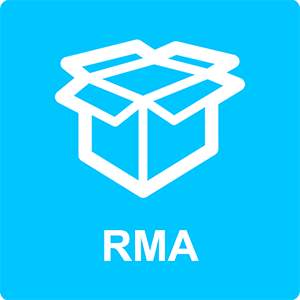Contact SRS for further Return Authorization Form details. Pls receive RMA before any products are shipped from your location.
RA Form: Streamlining the Product Return Process
Authorization
An authorization known as an RMA (Return Merchandise Authorization) form, is a standard document used by businesses to facilitate the return of purchased products. In this article, we will delve into what a return authorization form is, its purpose, and the key information it typically includes. Let’s explore the details.
A return form is a structured document that serves as a communication tool between a customer and a business when initiating a product return. It is designed to streamline the process, ensuring that all necessary information is captured and documented. Thus, expediting the resolution and minimizing confusion or errors.
Purpose
The primary purpose of an RAF is to obtain approval from the seller before the customer sends back the product(s). This approval is typically provided in the form of a unique authorization number, which helps the seller track and identify the returned item(s) throughout the process. By requiring customers to complete this form, businesses can maintain clear records of the return. It also ensures that it adheres to their return policy guidelines.
A standard return authorization form usually includes the following key information:
- Customer Details: The form collects customer information such as name, address, contact details, and sometimes a purchase order or invoice number for easy identification of the original transaction.
- Product Details: The form captures specific details about the product being returned, including the item name, code, and quantity. In addition, a brief description of the reason for the return (e.g., damaged, defective, wrong size).
- Return Method and Shipping Instructions: It specifies whether the customer will be responsible for shipping costs or if a prepaid return label will be provided. It may also include instructions on packing, addressing, and any required documentation to accompany the return.
- Return Authorization Number: Upon approval, the form assigns a unique return authorization number that serves as a reference for tracking and processing the return. This number is often required for communication between the customer and the seller throughout the return process.
- Return Policy and Terms: The form may include a summary of the seller’s return policy, including conditions for eligible returns. Also, timeframes, restocking fees (if applicable), and any other relevant terms or conditions.
By utilizing a form, businesses can ensure that the return process is efficient and in line with their established return policies. This helps to minimize errors, disputes, and delays, ultimately leading to improved customer satisfaction and streamlined operations.
In Conclusion
A return authorization form is an essential tool for businesses to initiate and manage the return process. By capturing crucial customer and product information, obtaining approval, and providing clear instructions, this form streamlines the return process. It also enhances communication between the customer and the seller. Implementing a well-designed return authorization form can help businesses handle returns seamlessly, fostering positive customer experiences. Finally, it helps in maintaining effective inventory management.

